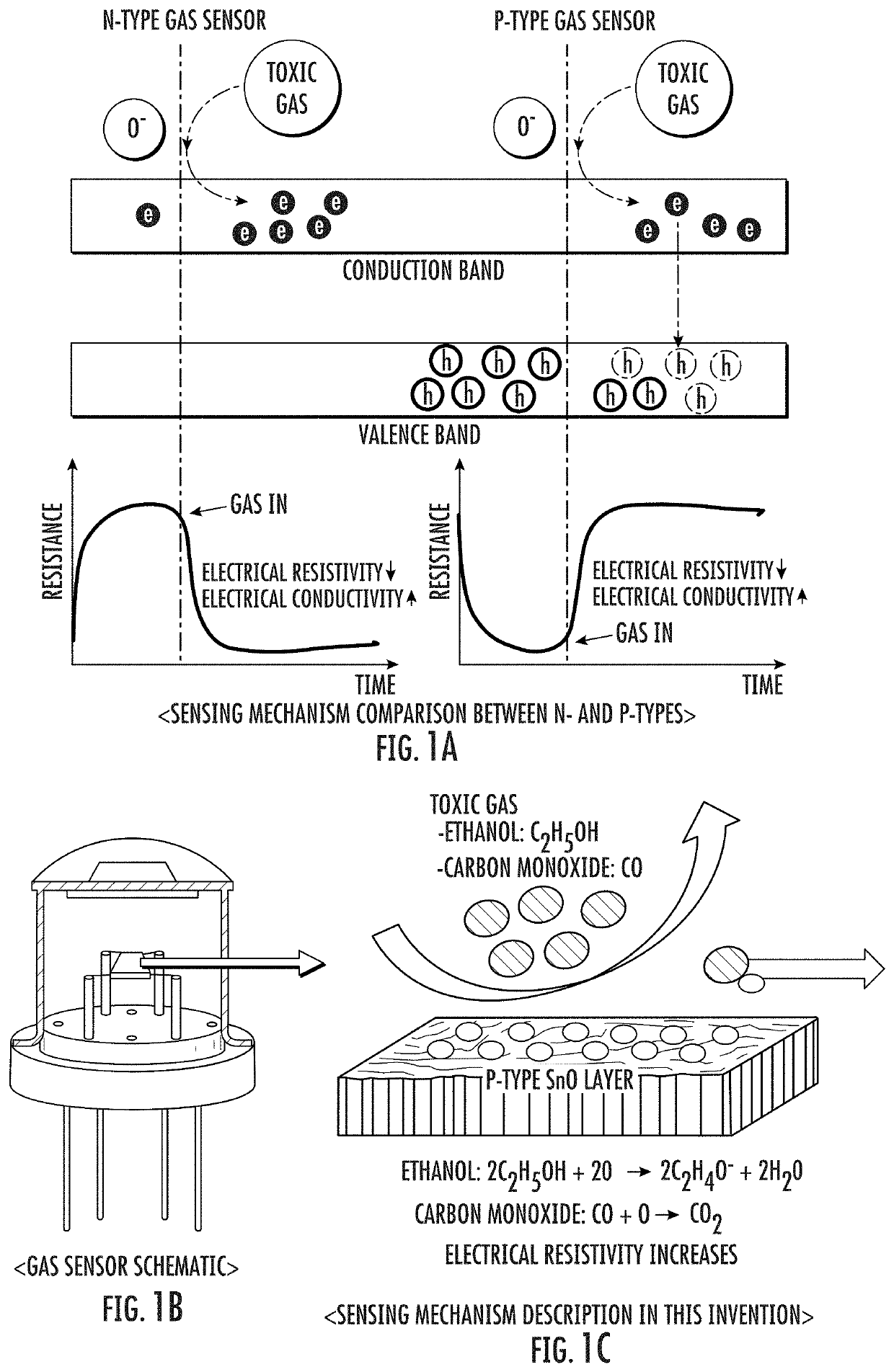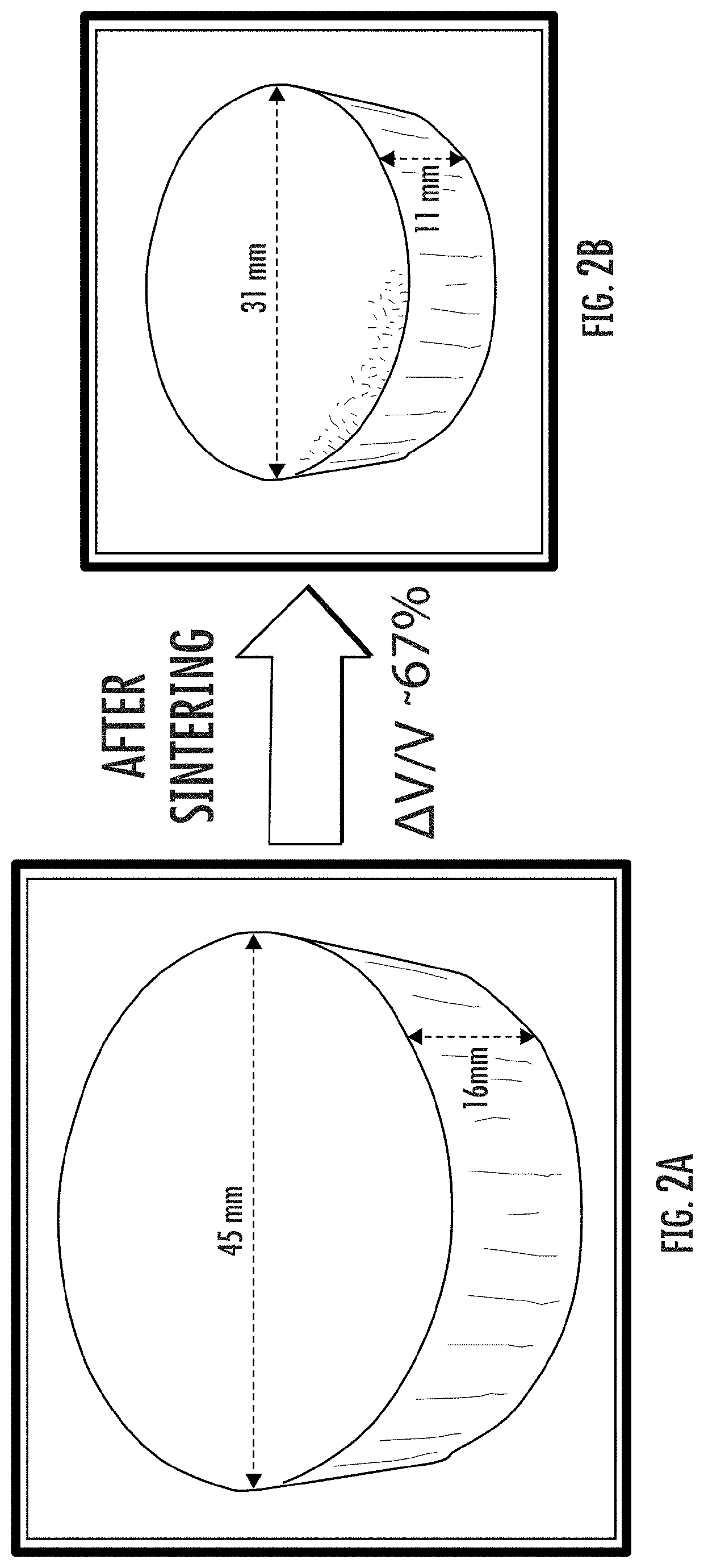Gas Sensor Device Based on Metal Oxide Foam
- Summary
- Abstract
- Description
- Claims
- Application Information
AI Technical Summary
Benefits of technology
Problems solved by technology
Method used
Image
Examples
exemplary embodiment 1
am
[0056]Tin oxide powder (e.g., 15.5 grams) was suspended in a 20-milliliter solution of deionized water containing polyvinyl alcohol binder, and a sintering agent (e.g., copper oxide (CuO) powder, less than 3 weight percent) was added to improve the tin oxide powder densification. The slurry was dispersed using a manual stirrer for 30 minutes and then sonicated for 1 hour. To ensure sufficient particle dispersion, the stirring process was repeated twice.
[0057]The slurry was then cooled to a few degrees above the freezing point of water and poured into a cylindrical mold consisting of insulated polytetrafluoroethylene (PTFE), Teflon, or silicone, or a combination, on a copper rod. The copper rod was cooled using liquid nitrogen controlled by a thermocouple and temperature controller.
[0058]Once the freezing process was complete, the frozen tin oxide green-body foam sample was removed from the mold and dried at −80 degrees Celsius for 48 hours in a freeze dryer under 10−2 torr residua...
exemplary embodiment 2
vice
[0059]To manufacture a highly sensitive gas-sensing device, two platinum electrode pads and a ruthenium oxide heater were printed on low temperature co-fired ceramic (LTCC) substrate. With via punching and silver (Ag) paste filling, a ruthenium oxide (RuO2) heater layer was created, followed by the patterning of two platinum electrodes at 200-micron gap using a lift-off process and shadow mask. Gas sensitivity was then measured at different ethanol gas concentrations from 20-60 parts per million at 300 degrees Celsius. For carbon monoxide gas detection performance, sensor response was measured for low concentrations of 100-500 parts per million and high concentrations of 1000-5000 parts per million at 200-300 degrees Celsius. During the measurements, gas concentrations were balanced and controlled by a mass flow controller (MFC), with gas being injected into the sensor chamber while continuously measuring the sensor electrical resistance at constant microangstroms.
[0060]FIGS. 1A...
PUM
| Property | Measurement | Unit |
|---|---|---|
| Temperature | aaaaa | aaaaa |
| Temperature | aaaaa | aaaaa |
| Temperature | aaaaa | aaaaa |
Abstract
Description
Claims
Application Information
 Login to view more
Login to view more - R&D Engineer
- R&D Manager
- IP Professional
- Industry Leading Data Capabilities
- Powerful AI technology
- Patent DNA Extraction
Browse by: Latest US Patents, China's latest patents, Technical Efficacy Thesaurus, Application Domain, Technology Topic.
© 2024 PatSnap. All rights reserved.Legal|Privacy policy|Modern Slavery Act Transparency Statement|Sitemap



